Rescued Irrawaddy Dolphin Calf, “Paradon,” Receives Life-Saving Care in Thailand
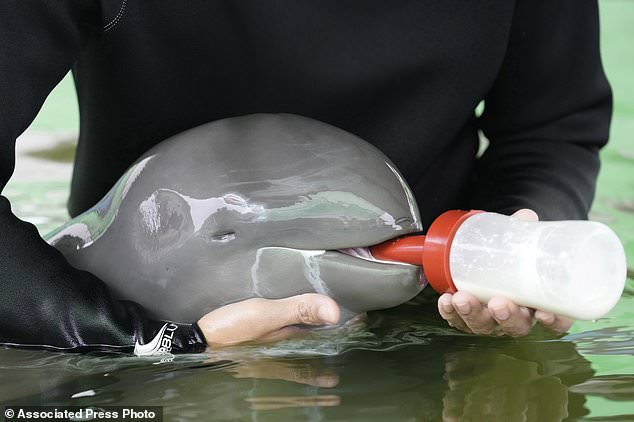
RAYONG, Thailand (AP) – In a heartwarming rescue effort, a sick and weak Irrawaddy dolphin calf found itself drowning in a tidal pool along the shores of Thailand. Fortunately, local fishermen discovered the struggling baby dolphin and quickly reached out to marine conservationists for assistance. The timely response from the fishermen and the subsequent emergency care provided by a dedicated team helped save the calf’s life.
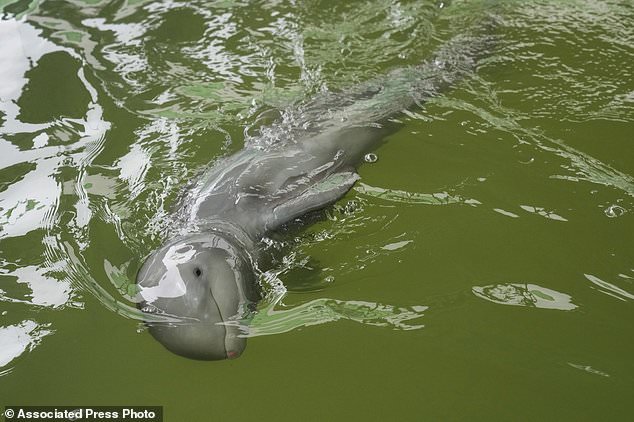
The dolphin calf, affectionately nicknamed Paradon, meaning “brotherly burden,” faced an uphill battle from the very beginning. International Union for Conservation of Nature lists Irrawaddy dolphins as a vulnerable species, found in the shallow coastal waters of South and Southeast Asia and three rivers in Myanmar, Cambodia, and Indonesia. Their survival is threatened by habitat loss, pollution, and unintentional fishing practices that often ensnare dolphins along with other species.
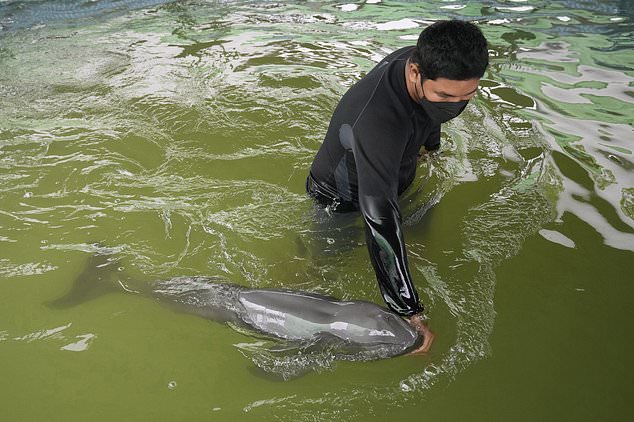
Upon receiving the distress call, officials from Thailand’s Marine and Coastal Resources Research and Development Center were alerted. They promptly advised the fishermen on how to provide immediate care until a rescue team could transport the calf to the center for veterinary attention.
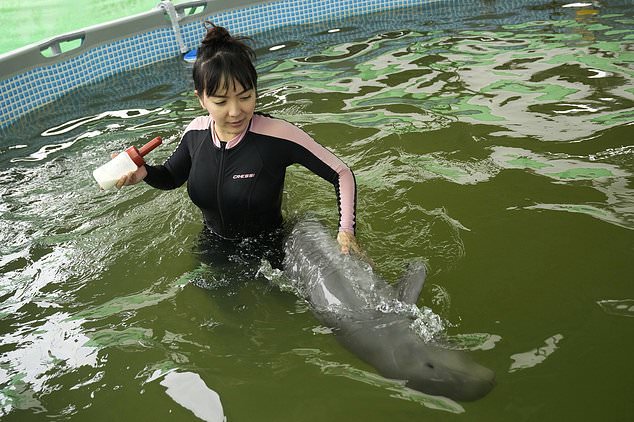
The team at the marine research center believes that approximately 400 Irrawaddy dolphins remain along the eastern coast of Thailand, bordering Cambodia. Given the delicate state of Paradon’s health, his chances of survival were initially slim. Stranded dolphins found on the shore are typically in critical condition, making successful rescues a rare occurrence. Nevertheless, the dedicated team gave it their all to save Paradon’s life.
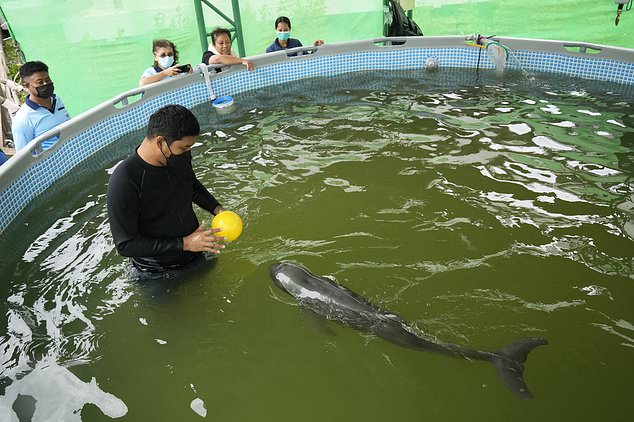
After being placed in a seawater pool, Paradon received treatment for a lung infection that had severely weakened him. Volunteers were assigned round-the-clock shifts to monitor and care for the dolphin. To prevent him from drowning, they had to support him in his tank and feed him milk, initially through a tube and later from a bottle as he regained strength.
Now, after a month of intensive care, Paradon’s condition is gradually improving. The calf, estimated to be between 4 and 6 months old, can swim on his own and shows no signs of infection. However, he remains weak and struggles to consume an adequate amount of milk, despite the team’s efforts to feed him every 20 minutes.
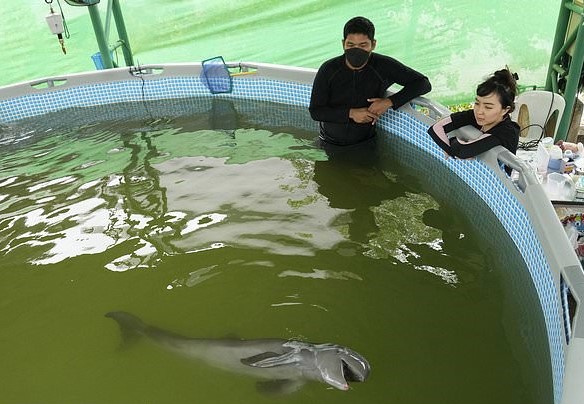
Volunteers like Thippunyar Thipjuntar, who take turns in caring for Paradon, have formed an emotional attachment to the baby dolphin. With his round face and curved mouth that resembles a smile, Paradon has captured their hearts. Thipjuntar expresses concerns about his development and nutrition, emphasizing the importance of providing him with the best possible care.
The director of the marine center, Sumana Kajonwattanakul, acknowledges that Paradon will require long-term care, possibly up to a year, until he can be weaned off milk and learn to hunt for his own food. Releasing him prematurely would pose challenges, as he still relies on milk for sustenance. The team must ensure that he develops his teeth, teach him to eat fish, and integrate him into a pod—a process that will take time and patience.

Paradon’s caregivers believe that the extended tender loving care they provide is worth the effort. The successful rescue and rehabilitation of a dolphin calf like Paradon contribute to the broader understanding of treating and conserving this endangered species. By saving Paradon and raising awareness about the conservation of rare animals, the team hopes to inspire others to join the cause and protect these remarkable creatures with dwindling populations.
As Paradon continues on the road to recovery, his story serves as a reminder of the importance of conservation efforts to safeguard our oceans and the diverse marine life within them. The commitment and dedication of the rescue team, volunteers, and marine conservationists in Thailand demonstrate the impact that collective action can have in ensuring a brighter future for our planet’s vulnerable species.



